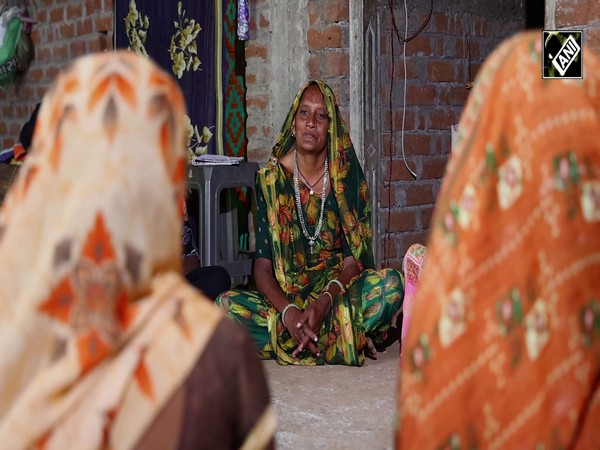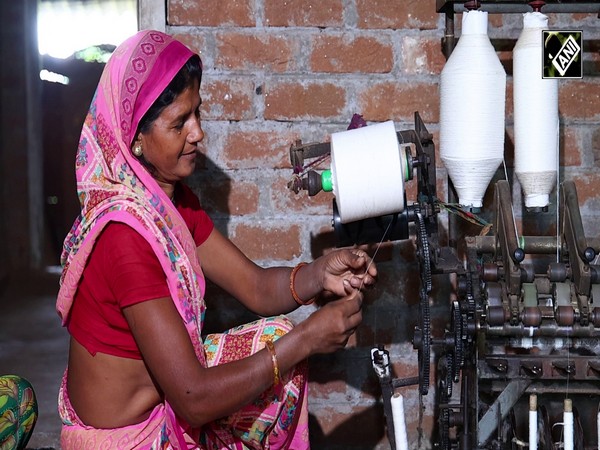Various indicators of employment bounced back: Economic Survey
Jan 31, 2022

New Delhi [India], February 1 : After a decline during the first quarter of 2020-21 due to the nationwide lockdown in wake of the COVID situation, various indicators of employment have bounced back remarkably, said the Ministry of Finance on Monday.
The Economic Survey 2021-22 which was tabled in the Parliament on Monday by the Union Minister for Finance and Corporate Affairs, Nirmala Sitharaman has analysed trends in the labour market and the impact of COVID on employment.
The Economic Survey also analyses trends in urban employment using Employees Provident Funds Organization (EPFO) payroll data. An analysis of the EPFO data suggests a significant acceleration in the formalization of the job market, during 2021. In fact, in November 2021, the monthly net additional EPF subscription peaked with 13.95 lakh new subscribers, the highest in any given month since 2017, the Survey states. This translates into a growth of 109.21 per cent in EPF subscriptions from November 2020.
The Economic Survey further states that the monthly net addition in EPF subscriptions during 2021 has not only been higher than the corresponding monthly values in 2020 but they have also surpassed the levels of the corresponding months during the pre-pandemic year 2019.
The Survey states that with the revival of the economy, the Unemployment Rate (UR), the Labour Force Participation Rate (LFPR) and the Worker Population Rate (WPR) almost reached their pre-pandemic levels during the last quarter of 2020-21 as per Periodic Labour Force Survey Data.
Economic Survey 2021-22 analyses trends in Rural Labour Market with the help of latest data on demand for work under Mahatma Gandhi National Rural Employment Guarantee Scheme (MGNREGS).
The Survey observes that the MGNREGS employment peaked during the nationwide lockdown in 2020. However, an interesting trend was observed for many migrant source states like West Bengal, Madhya Pradesh, Odisha, Bihar, in which the MGNREGS employment in most months of 2021 has been lower than the corresponding level in 2020. In contrast, the demand for MGNREGS employment has been higher for migrant recipient states like Punjab, Maharashtra, Karnataka and Tamil Nadu for most months in 2021 over 2020.
Giving further details, the Economic Survey points out that the demand for MGNREGS work has stabilized after the second Covid wave. It further states that the aggregate MGNREGS employment is still higher than the pre-pandemic level. During the second Covid wave, demand for MGNREGS employment reached the maximum level of 4.59 crore persons in June 2021.
The Economic Survey has highlighted several policy responses to boost livelihoods. These include Aatmanirbhar Bharat Rojgaar Yojana which was announced as a part of the Aatmanirbhar 3.0 package to boost the economy, increase the employment generation in post-COVID recovery phase and to incentivise the creation of new employment along with the social security benefits and restoration of loss of employment during Covid-19 pandemic.
To boost employment and livelihood for returnee migrant workers, Garib Kalyan Rojgar Abhiyan was launched in June 2020. It focused on 25 target driven works to provide employment and create infrastructure in the rural areas of 116 districts 6 states with resource envelope of Rs.50,000 Crore.
Similarly, allocation to MGNREGS in FY 2021-22 increased to Rs. 73,000 crore, from Rs. 61,500 crore in FY 2020-21. Allocation for FY 2021-22 has been enhanced to Rs.98000 crore so far. In FY 2021-22 over 8.70 crore individuals and 6.10 crore households were provided work so far.

















